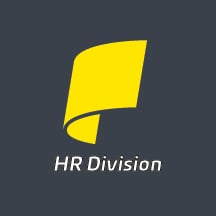From filing deadlines, regulatory reporting, remote work issues, the COVID-19 pandemic has impacted many areas of small businesses and added additional responsibilities and new challenges for HR teams . Here are a few important changes and new laws that may affect your business during the pandemic.
PAYROLL
Review the Provisions of the New Families First Coronavirus Response Act (FFCRA). The new Families First Coronavirus Response Act (FFCRA) requires certain public employers and private employers with fewer than 500 employees to provide employees with paid sick leave or expanded family and medical leave for specified reasons related to COVID-19. Each covered employer is also required to display an associated poster, outlining the FFCRA requirements, in a location that is visible to all employees.
In addition, the federal government will reimburse small and midsize businesses and non-profit organizations for costs related to giving employees paid leave. To take immediate advantage of the paid leave credits, employers can retain and access funds that they would otherwise pay to the IRS in payroll taxes. These provisions, including claiming tax credits, apply beginning April 1 through Dec. 31, 2020.
COMPLIANCE
Prepare EEO-1 Report.Employers with 100 or more employees or federal contractors with 50 or more employees must submit a certified EEO-1 Report by May 31, 2020.
 Review All Insurance Policies. Are your employees now using personal vehicles, computers, or other property to perform work functions? Contact your insurance broker to find out if you need to adjust your liabilities to cover any additional exposure. Also, check with your Workers’ Compensation broker to make sure that any changes in your work environment or changes in staff work assignments might have on your exposure and codes currently on your account.
Review All Insurance Policies. Are your employees now using personal vehicles, computers, or other property to perform work functions? Contact your insurance broker to find out if you need to adjust your liabilities to cover any additional exposure. Also, check with your Workers’ Compensation broker to make sure that any changes in your work environment or changes in staff work assignments might have on your exposure and codes currently on your account.
New Form I-9 Review Requirements. During the COVID-19 outbreak, the U.S. Department of Homeland Security (DHS) announced that it would defer the requirement for employers to review Form I-9 documents in-person with new employees. The change applies only to employers and workplaces that are operating remotely. Employers must provide written documentation of remote onboarding and telework policies for each employee working remotely.
The physical documentation review is still required for employees working onsite. The new I-9 provisions are in effect until May 19, 2020, or within three business days after the termination of the national emergency.
BENEFITS
 Evaluate Your Benefits Program Before Reducing Payroll. Before you consider a furlough, terminate employees, or implement a pay cut, consider how the action may impact your employee benefits program.
Evaluate Your Benefits Program Before Reducing Payroll. Before you consider a furlough, terminate employees, or implement a pay cut, consider how the action may impact your employee benefits program.
Here are a few issues to consider:
- Verify health plan terms. Health plans may not automatically end when an employee is furloughed or terminated. Generally, the plan terms determine whether active coverage can continue during short-term leaves of absence, whether paid or unpaid. Work with your carrier to understand the terms of your plan.
- Consider the ACA employer penalty. Employers may be subject to an ACA penalty for terminating group health plan coverage for failing to offer coverage to 95 percent of full-time employees. In addition, COBRA coverage must remain affordable to avoid an ACA penalty, which may require a continued or increased employer subsidy.
- Review Severance Plans. Review your severance policies for the benefits that need to be provided to terminated employees.
- Determine How Employees will continue to Pay Premiums and contributions. Will your employees be able to pay the premiums/contributions to maintain coverage during a leave period? Failure to pay monthly premiums for coverage could cause coverage to lapse, so it’s important to develop a plan in advance of making staff changes.
- Consider the Impact of 401(k) and other Retirement Plans. Reducing your workforce may cause a “partial termination” under the rules of a 401(k) or other retirement plans. Check with your benefits broker or advisor for the specific provisions of your plan.
- Review all Employee Agreements. How will a leave period or termination affect employee compensation and employment agreements as a result of a pandemic? Many employee agreements cannot be altered, so it’s important to review all implications of Section 409A of the tax code.
Prepare ERISA Plan Report. Applicable employers are required to file an employee benefits plan report, Form 5500, with the Department of Labor (DOL) if, on the first day of an ERISA plan year (which is different than the policy year), 100 or more participants are enrolled in coverage. In addition, health and life insurance and retirement plans require employers to provide enrollment figures and balances before the end of the year.
GENERAL HR
 Review Best Practices for Remote Workers. Overnight, remote working became the new normal for many businesses. While not specific to the coronavirus, the U.S. Department of Commerce offers an in-depth guide for managing telework, remote works, as well as guidelines and policies for personal devices.
Review Best Practices for Remote Workers. Overnight, remote working became the new normal for many businesses. While not specific to the coronavirus, the U.S. Department of Commerce offers an in-depth guide for managing telework, remote works, as well as guidelines and policies for personal devices.
Update your Employee Handbook. Have you converted your office workforce to a home-office workforce? Transitioning your workforce to work remotely requires a number of changes that need to be reflected in your Employee Handbook, such as adding a “work from home” policy that employees must sign. This helps employees understand what your new work landscape looks like and manages expectations as employees navigate this new territory.
Review Important EEOC Updates. The EEOC enforces workplace anti-discrimination laws, the Americans with Disabilities Act (ADA) and the Rehabilitation Act. It also requires employers to provide reasonable accommodation and enforces rules regarding medical examinations and inquiries. During the COVID-19 pandemic, the ADA and Rehabilitation Act rules continue to apply, but does not interfere with or prevent employers from following the guidelines and recommendations of the CDC or state and local public health authorities. To help employers ward off the spread of the coronavirus, the EEOC provides the following guidance:
 Taking an Employee’s Temperature. Generally, measuring an employee's body temperature is considered a medical examination. The Americans with Disabilities Act (ADA) prohibits medical examinations unless it is job-related and consistent with business necessity.
Taking an Employee’s Temperature. Generally, measuring an employee's body temperature is considered a medical examination. The Americans with Disabilities Act (ADA) prohibits medical examinations unless it is job-related and consistent with business necessity.
Because the CDC and state and local health authorities have acknowledged community spread of COVID-19 and issued related precautions, employers are now allowed to measure an employee’s body temperature. The temperature reading should be kept confidential, and the person administering the temperature check should be trained on the procedure. The EEOC cautions that a person may not have a fever but still have COVID-19 or be a carrier.
Employers should have a full COVID-19 Response Plan that includes best practices for documentation and guidelines that go beyond taking an employee’s temperature. Consideration should also be given in advance on how to deal with employees who refuse.
Hiring Guidelines. Be familiar with the new guidelines for hiring, which include:
- Employers may screen applicants for symptoms of COVID-19 after making a conditional job offer.
- An employer may take a job applicant's temperature as part of a post-offer, pre-employment medical examination.
- An employer may delay the start date of an applicant or withdraw a job offer of a new hire with COVID-19 or displays symptoms associated with the disease.
Confidentiality. During a pandemic, ADA-covered employers are permitted to ask employees who call in sick if they have symptoms of COVID-19. Employers must maintain all information about employee illness as a confidential medical record in compliance with the ADA.
 Returning to Work. Under the ADA, an employer can require employees to provide a physician’s note before returning to work. However, physicians and other health care professionals may not be accessible to provide documentation, so alternative methods should be considered, such as a form from a local clinic.
Returning to Work. Under the ADA, an employer can require employees to provide a physician’s note before returning to work. However, physicians and other health care professionals may not be accessible to provide documentation, so alternative methods should be considered, such as a form from a local clinic.
As the pandemic evolves, the guidance from public health authorities is likely to change, and employers should continue to follow the most current information on maintaining workplace safety. For more information, visit www.eeoc.gov.
Prepare Succession and Performance plans. Succession and performance plans prepare your business during transitions in leadership. It's also a good opportunity to identify, train, and prepare those employees to step into leadership roles.
New Legislation & Financial Support for Small Businesses Impacted the Pandemic
The CARES Act. The CARES Act provides funds to help small business owners keep employees on their payroll. Provisions include:
- $350 billion in forgivable loans for small businesses through the Paycheck Protection Program
- Advances on SBA disaster loans never have to be repaid
- Forgiving existing non-disaster SBA loan payments over the next six months
 Paycheck Protection Program. The Paycheck Protection Program (PPP) helps small businesses keep their workforce employed. The new loan program will be available retroactive from Feb. 15, 2020, so employers can rehire their recently laid-off employees through June 30, 2020.
Paycheck Protection Program. The Paycheck Protection Program (PPP) helps small businesses keep their workforce employed. The new loan program will be available retroactive from Feb. 15, 2020, so employers can rehire their recently laid-off employees through June 30, 2020.
All small businesses, including non-profits, veteran organizations, tribal groups, sole proprietors, self-employed, and independent contractors, with 500 or fewer employees, or no greater than the number set by the SBA as the size standard for certain industries, are eligible. The program covers the entire cost of payroll and other eligible expenses for up to eight weeks. Provisions include:
- Loans up to $10 million used to cover payroll, paid sick leave, insurance premiums, rent, utilities, and mortgage payments.
- If you retain your full staff and payroll, all of your eligible expenses for up to eight weeks will be forgiven.
- Eligible businesses must complete a PPP loan application form with the required documentation by June 30, 2020.
For more information, visit www.SBA.gov/Coronavirus.
Employee Retention Credit. The Treasury Department and the Internal Revenue Service recently launched the Employee Retention Credit, designed to encourage businesses to keep employees on the payroll. The refundable tax credit is 50 percent of up to $10,000 in wages paid by an eligible employer whose business has been financially impacted by COVID-19. The credit is available to all employers regardless of size, including tax-exempt organizations, with gross receipts below 50 percent of the comparable quarter in 2019. Wages paid after March 12, 2020, and before Jan. 1, 2021, are eligible for the credit.
Employers can be reimbursed immediately for the credit by reducing their required deposits of payroll taxes that have been withheld from employees’ wages by the amount of the credit. Eligible employers must report their total qualified wages and the related health insurance costs for each quarter on quarterly employment tax returns or Form 941, beginning with the second quarter. If the employer’s employment tax deposits are not sufficient to cover the credit, the employer may receive an advance payment from the IRS by submitting Form 7200,
NEED HELP?
We are all in this together, and Propel HR is here to help you stay up-to-date with a helpful one-page HR Checklist. On it, you will find important changes related to payroll, benefits, compliance, and general HR. Depending on the type of business and industry, your checklist may be different and even more complex. If so, just contact us. By partnering with a certified PEO (CPEO), you gain access to a team of experts to help you navigate the complexities of your business as well as stay compliant during these uncertain times.
To learn more, visit www.propelhr.com, and to download a helpful one-page COVID-19 HR Checklist, visit www.mypropelpro.com/checklist.
About Propel HR. As an IRS-certified Professional Employer Organization (PEO), Propel HR has been a leading provider of Human Resources and payroll solutions for more than 20 years. We partner with small to mid-sized businesses to manage payroll, employee benefits, compliance and risks, and other HR functions in a way that maximizes efficiency and reduces costs.
PLEASE NOTE: This information is for general reference purposes only. Because laws, regulations, and filing deadlines are constantly changing, please check with the appropriate organizations or government agencies for the latest information and consult your employment attorney and/or benefits advisor regarding your responsibilities. In addition, your company may be exempt from certain requirements and/or be subject to different requirements under the laws of your state. (Updated April 7, 2020)











